Julia Child's Best Cooking Tips Will Completely Transform These Popular Dishes

Few chefs have had the impact and legacy of Julia Child. Despite being something of a culinary underdog -- having started cooking at 36 -- her indomitable cheeriness, serious approach to the culinary arts, and unwavering tenacity made her stardom almost an inevitability. Her cookbook, "Mastering the Art of French Cooking," became a bestseller when the second volume was released in 1970, and paved the way for her first television show, "The French Chef." One of the things that makes this cookbook, and her entire body of work, so valuable is how packed with knowledge it is. We've winnowed her expertise down to her absolute best cooking tips.
In all her years on TV and writing cookbooks, Child imparted countless pieces of advice, from the never-ending merits of butter to the importance of having fun and being fearless in the kitchen. It would be impossible to make a comprehensive list of every pearl of wisdom she ever gave. But we've boiled it down to a few recipe-specific essentials that will transform some of the most popular dishes in existence. From the best way to make potato salad to the secret of creating perfectly poached eggs, these are Child's most helpful hints.
Read more: Ingredients To Take Your Scrambled Eggs To The Next Level
Scrambled Eggs

Despite scrambled eggs' simplicity, the number of ways to make them seems to expand every day. Should you add water or milk to your eggs? And if you add water, should it be still or sparkling? What about cream? And how about all those other liquid ingredients that can make scrambled eggs better? Do you cook them on a low temperature and stir them as little as possible, or do you prefer the cooking method for Australian folded eggs, in which you use high heat and a fast moving spatula?
Ultimately, these decisions are down to personal preference, but Julia Child had some expert advice that applies to pretty much any option. Scrambled eggs will continue to cook through residual heat even after you've removed them from the burner. To make sure her eggs didn't overcook once they're off the heat, Child always kept a few tablespoons of raw egg to pour into the scramble just before serving it, to bring down its temperature and stop it from continuing to cook.
Quick Bread
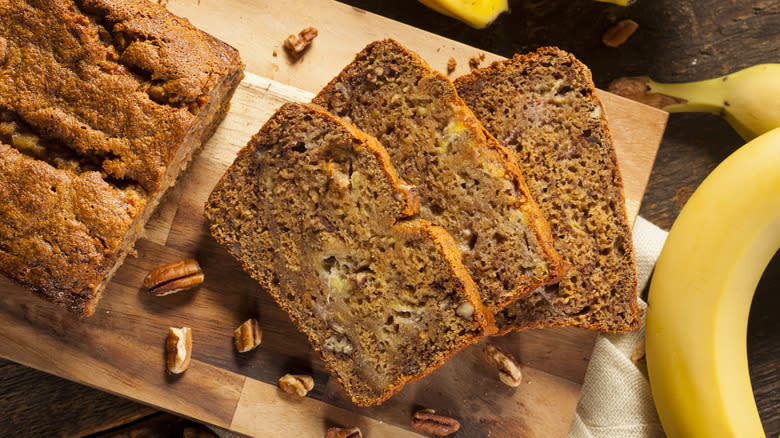
Baking powder is the best way to make cakes and breads rise without yeast. But it isn't always that simple. Sometimes, you can put in the prescribed amount of baking powder, only to find that the cake or bread you're making stays flat as a crepe. You might be tempted to start the recipe over from the beginning and simply add more baking powder, but you're likely to end up with a stubbornly flat and now inedibly metallic-tasting result.
The most common reason for uncooperative baking powder is age. Like milk, baking powder does not last forever. Unfortunately, with no change in smell or appearance, it can be tricky to determine whether it's outdated until it's too late. In general, baking powder starts to lose its strength after six months, but unless you put a post-it note on the can when you buy it, you'll probably lose track. Julia Child's solution makes things infinitely simpler. Instead of adding it to your batter and crossing your fingers, stir a teaspoon of the powder into a half cup of warm water. If it starts to bubble, you're good to go. If it sinks and dissolves without so much as a fizz, it's best to repurpose it into homemade cleaning products and get a fresh can.
Salad Dressing
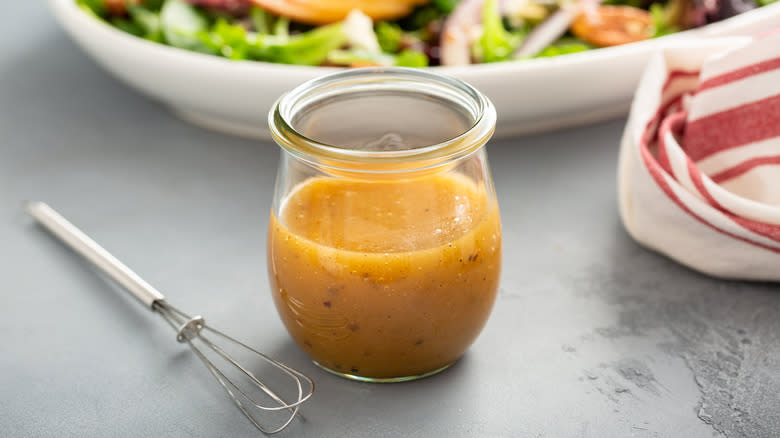
No store-bought salad dressing can beat the homemade kind when it's done well. The trouble is, it's hard to get the balance of ingredients just right, regardless of whether you're using a recipe or going off of intuition. In theory, it should be pretty straightforward -- some type of oil, an acid, a little salt, and maybe some sweetness. In practice, however, it rarely works out this way.
Julia Child was adamant that bottled salad dressing was a waste of money, as dressing is easy to make at home and the store-bought versions never use good oil. While "easy" might not be the first word that comes to mind when you think about making salad dressing, Child had good reason to be so forthright. As she explained in an episode of "The French Chef," the proportions for salad dressing in many recipes are not quite right. Instead of using a one to three ratio of vinegar to oil, she recommended cutting down on the vinegar (or lemon juice if that's the acid you're using). Her advice was to use the one to five ratio of a dry martini, which, we can all agree, is the most classy and memorable comparison that a salad dressing recipe could hope for.
Eggplant
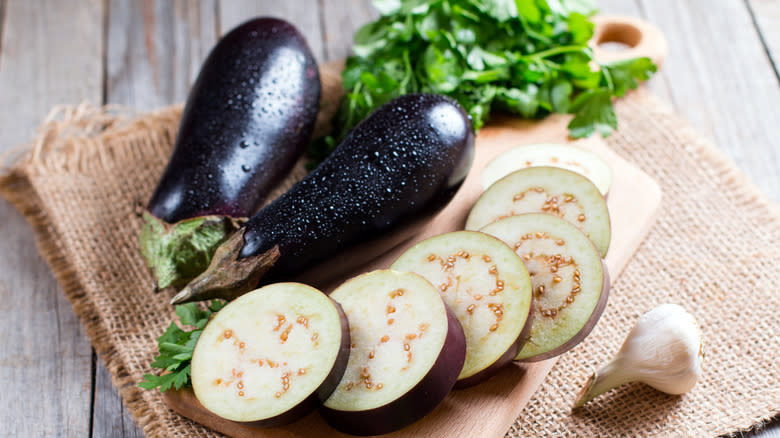
When prepared well, eggplant can be so buttery it almost melts in your mouth. However, it can also end up dry, spongy, and downright leathery. The purple vegetable is a foundational ingredient in recipes such as moussaka and baba ganoush, and there's nothing else that can credibly substitute it. Finding a preparation method that works every time will save you from inconsistent results, and luckily, Julia Child had the answer.
To begin with, you need to make sure you're cooking with a tasty eggplant. If you've found the vegetable to be bitter in the past, it likely had more to do with the quality of the raw ingredient than the cooking method. Make sure you purchase ones that are shiny with tight skin rather than ones that are dull and slightly shriveled. To remove potential bitterness, cut the eggplant into round slices about half an inch thick and sprinkle them with salt. After they've rested for about 20 minutes, press a paper towel on top to absorb the moisture.
If you want the eggplant to be extra buttery and have struggled with dry eggplant in the past, steam or bake it at 400 degrees Fahrenheit for a few minutes before adding it to a recipe. You could even do this with eggplant parmesan before breading and baking it. It will be so tender you could eat it with a spoon.
Lasagna
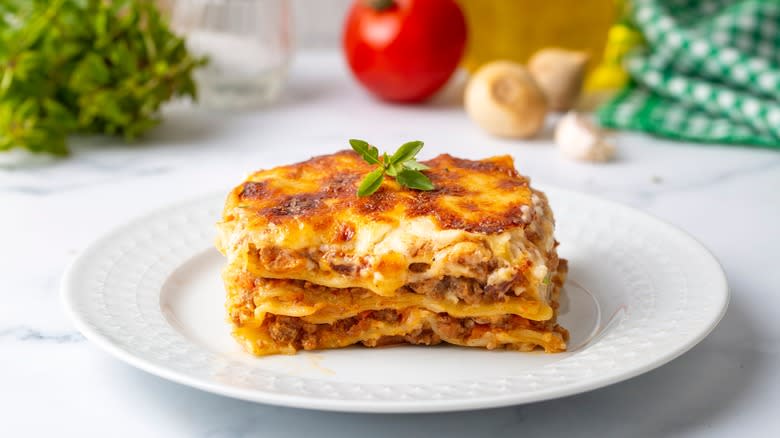
There are many ways to make lasagna, from versions that are loaded with multiple types of cheese to ones that are gluten-free. Of the many lasagna tips and tricks that you'll wish you knew sooner, Julia Child's advice on getting the sauce just right is worth following every time. Since most lasagna recipes revolve around pasta, cheese, and tomato sauce, paying careful attention to each of these elements will pay dividends.
Instead of using just canned tomatoes or just fresh tomatoes for the sauce, Child recommended using both. Canned tomatoes and store-bought tomato sauce, though convenient, are often easily detected. No matter how many seasonings there are, they just don't have the bright, acidic flavor of fresh tomatoes. But fresh tomatoes cook down to almost nothing and spoil quickly, so purchasing enough for an entire lasagna can be impractical. By compromising with a half-and-half ratio, you'll have powerfully fresh tomato flavor and enough substance to fill out the casserole dish.
Child recommended blanching whole tomatoes for 10 seconds to make their skins easy to remove. Then, she suggested slicing the tomatoes in half and removing the seeds over a sieve to catch the juice. Roughly chop them, then seed and strain an equal amount of Italian plum tomatoes. From here, you can proceed with the tomato sauce recipe using both types of tomatoes.
Anything With Garlic
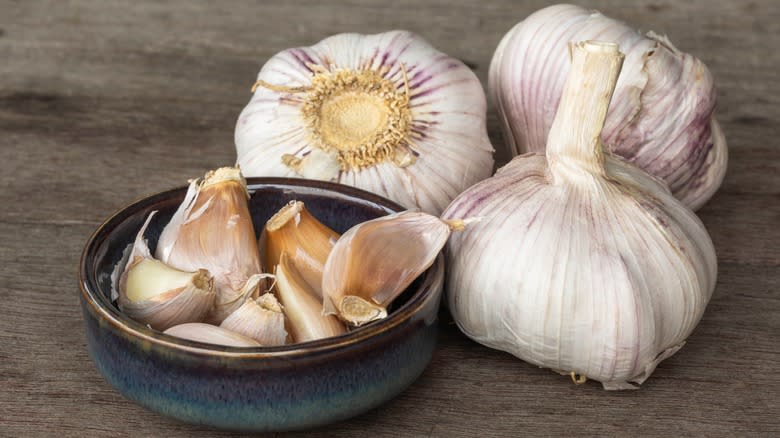
Garlic is one of the most common ingredients in savory recipes, suffusing dishes with its singular, potent flavor. Many cooks would be as lost without garlic in their kitchens as they would be without salt. Given how often many of us use this humble bulb, we're always on the lookout for new ways to make it easier to cook with. Julia Child had a few tricks up her sleeve on that account.
Whether you use a garlic press, a knife, or a grater, there is no perfect way to prepare garlic. It has papery skin that's hard to peel, and it needs to be minced into teeny tiny pieces in order to melt seamlessly in with other ingredients. Additionally, you don't want to make your hands reek of raw garlic. Child's solution to these common conundrums was simple but effective. Start by covering a clove of garlic with the flat side of your knife and bash it with the palm of your hand. This will cause the skin to break and be easily removed. Then, chop the clove a few times and sprinkle it liberally with salt. Turn the blade on its side again and start mashing the garlic by pressing the flat blade into it. According to Child, the salt softens the clove, making it easier to mash. You then have garlic paste that can easily be added to your recipe. Just make sure to account for the additional salt.
Cake
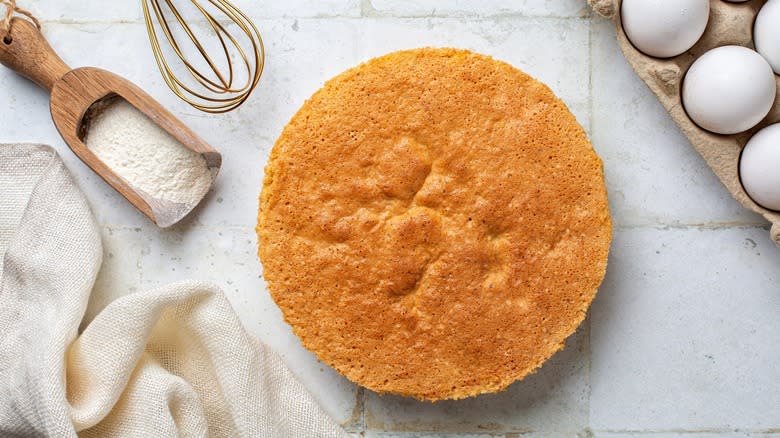
When you're making cakes and breads without the aid of yeast, you have to rely on several factors to make the batter rise. Baking powder, eggs, and the fluffy white mixture you get from creaming butter and sugar all contribute to the process. It's paramount that all the added air stays trapped in the batter when you transfer it to the oven. Unfortunately, you also have to mix in the dry ingredients, which can easily knock all that air out of the batter and leave you with a flat cake.
Julia Child had several hacks for keeping as much air in the batter as possible. First, she recommended adding a bit of sugar to the flour mixture to help prevent clumps. The fewer lumps there are, the less mixing you'll have to do and the more likely you'll be to overwork the batter. When the time comes to combine mixtures, make sure you're adding light ingredients to heavy ones. For example, in her tutorial for a genoise sponge cake, Child poured the mixture of beaten egg whites and flour into a bowl of melted butter instead of the other way around, because the latter method causes the butter to sink straight through the whipped egg whites and knocks all the air out as it goes. Once you've added the ingredients, plunge your spatula to the bottom of the bowl, bring it to the side, and gently scoop upward. Slowly continue this folding motion until the ingredients are incorporated.
French Bread

Having been trained in the French tradition, Julia Child knew a thing or two about breadmaking. Luckily for us, her advice makes the process easier, rather than fussier. Aside from all that waiting time while the dough rises, kneading can be the most daunting part of the breadmaking process. Some recipes suggest working the dough for 10 minutes or more, but 10 minutes of professional kneading might be very different from 10 minutes of kneading by a casual home baker. Knowing when you've under or overworked the dough can be tricky.
Child opted for a three-step kneading process. This gives your muscles a break and ensures that even if your technique is overly or insufficiently aggressive, the dough will still get the treatment it needs. Once the ingredients for the bread have been combined in a food processor and a ball of dough has formed, let it sit for five minutes. This allows the flour to absorb the moisture, starting the process of gluten formation and shortening the kneading process. Then, let the food processor work for about 30 revolutions of the blade and let it rest for another two minutes. Lastly, knead it by hand. Child recommended about 40 or 50 kneadings, depending on how it feels. By finishing the kneading by hand, you'll be able to feel exactly how elastic it is and avoid over-kneading it.
Poached Eggs
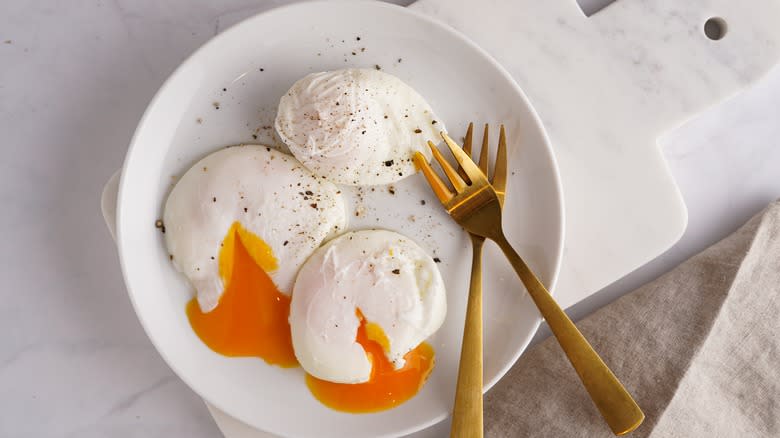
There's a lot of leeway when it comes to making scrambled and fried eggs. Even when they aren't spectacular, they're usually still pretty good. Poached eggs, on the other hand, can be a disaster. Add them to insufficiently hot water and they will fall apart before they can cook, leaving you with nothing more than a sad, lonely yolk. Add them to boiling water and the egg white will shred as soon as it hits the surface, leaving you with strands of overcooked white and a lump of mealy yolk. Then, of course, there's the question of forming the perfect, cohesive shape. Even if you're creating a vortex or using vinegar, you can still end up with shaggy whites rather than a smooth, opaque parcel surrounding the yolk.
Julia Child had some expert advice on how to make the best poached egg every single time. All you need is a pin and some boiling water. Before you crack a single egg, prick the shells with a pin and give them a 10-second boil. The pin prick ensures that the pocket of air inside the shell doesn't expand and crack the egg as it's boiling, while the boiling sets the egg slightly so that when you crack it into the simmering water, the white doesn't disperse.
Asparagus
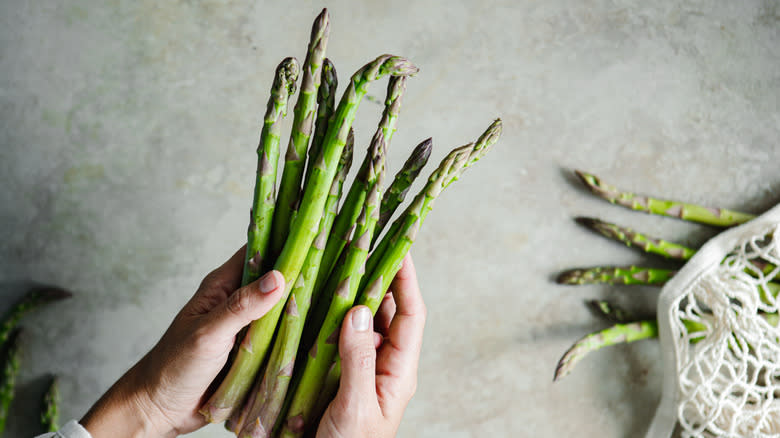
Asparagus is a deliciously tender and flavorful vegetable, but making it can be such a hassle that you might just decide to make broccoli or carrots instead. With tough, fibrous stems and a high price tag, it can sometimes feel like you're throwing your money away in exchange for only a few bites of perfection.
Julia Child was well aware of the pitfalls of making asparagus, and had several rules of thumb to get the most out of it. First, make sure you're picking a good bunch. Look for stalks that have a similar circumference so they cook at the same rate. The buds should be tight, the stalks should be firm, and there should be no withered ends. As soon as you return from the store, treat them like a bouquet of flowers. Line the stalks up so that the tips of the buds are in line, cut a half inch off the ends, and put them in a jar of water. Cover them, and store them in the fridge.
When you're ready to cook the asparagus, peel the stalks instead of cutting the ends further and boil them for four or five minutes. Make sure to remove them from the heat when they're still a vibrant green. Overcooking them will make them gray, waterlogged, and flavorless.
Quiche And Pie Crust
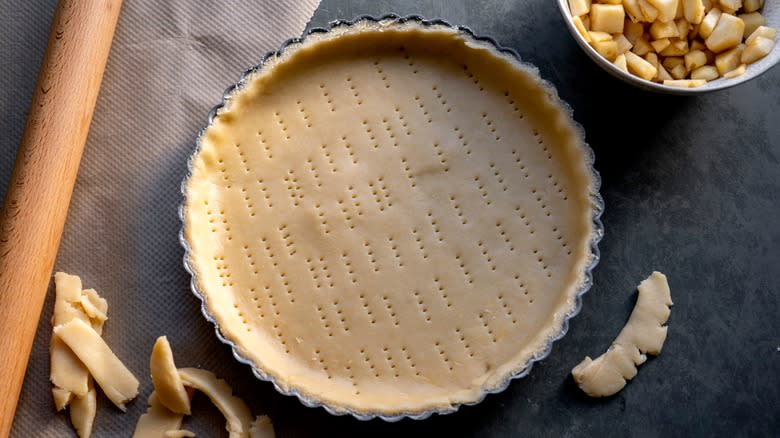
Pie crust is one of those recipes that you can make a hundred times and still not end up with consistent results. When you get it right, it's buttery, flaky, and dry, even when you add a wet filling. When you don't hit the sweet spot, however, it can be oily, rubbery, and soggy. Finding the perfect balance can be a lifelong quest, but following some advice from the one and only Julia Child can speed up the process.
In the first season of "The French Chef," Child suggested that home bakers use the same kind of flour every time they make pastry, explaining that there is variation even within the realm of all-purpose flour. Some have a higher proportion of hard wheat than others, but if you always use the same product, you'll know what to expect. Her next piece of advice was to use a mixture of butter and shortening. According to Child, all-butter crust can be a bit brittle when combined with the hard wheat in all-purpose flour, and shortening helps to tenderize it. Her ratio was one stick of butter (8 tablespoons) to 3 tablespoons of vegetable shortening.
The reason the combination of butter and shortening works so well is because they bring different strengths to the table. Butter provides flakiness and unparalleled flavor, while shortening provides a sturdier structure. With a high melting point, it also ensures that the crust holds its shape as it bakes.
Potato Salad

Potato salad is an easy side dish to whip up for a barbecue, potluck, or dinner party, but there are plenty of pitfalls. First, you'll need to pick the perfect potatoes for your potato salad. If you use a variety that has high starch content, such as russets, you'll find that they fall apart and turn to mash. Look instead for waxy potatoes like red or new potatoes, both of which provide the perfect balance of flavor and structure.
Child recommended boiling the potatoes until they're just barely tender, draining them, then letting them sit in a covered pan for a few minutes to firm up as they cool. She then made a somewhat surprising addition: chicken broth. Despite wanting to keep the potatoes firm and dry, adding liquid at this stage is an ingenious hack. Instead of absorbing the oil from the mayonnaise and becoming greasy and gummy, they absorb the broth. When you add the mayonnaise, it will cover the potatoes like a salad dressing instead of sinking into them and leaving the salad dry and gluey.
Read the original article on Mashed

 Yahoo Lifestyle
Yahoo Lifestyle 
